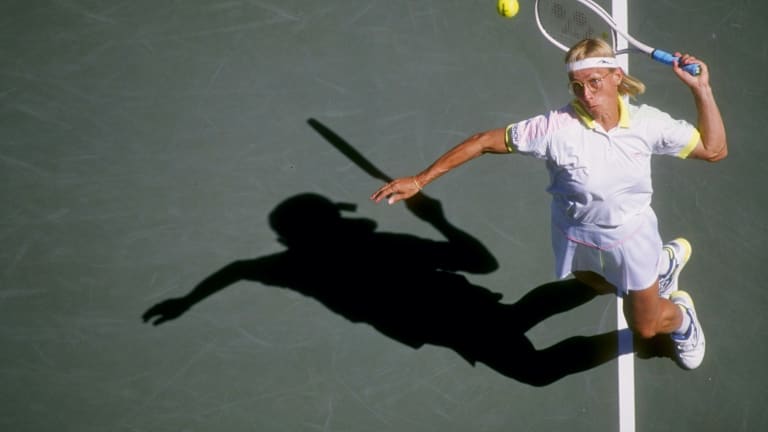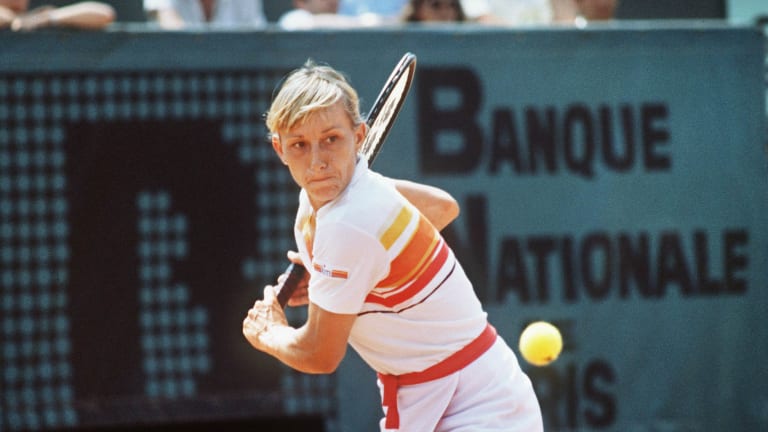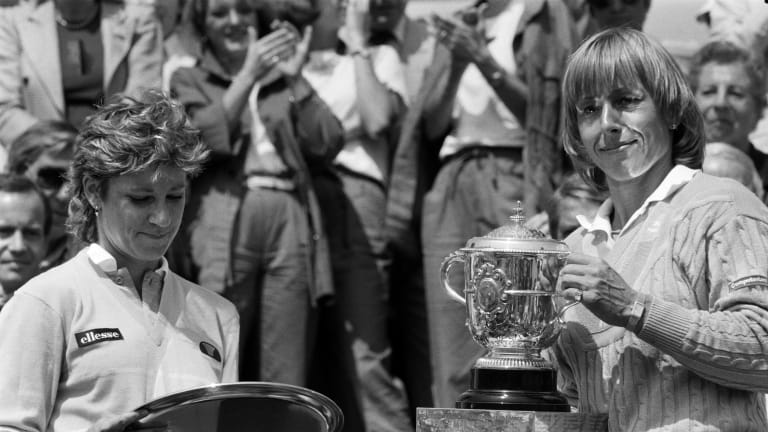Martina Navratilova turns 65 today. There has never been and likely never will be an athlete in any sport who traveled so far to accomplish so much, and do so for so long.
Navratilova’s achievements are epic. Start with an Open Era-record 59 Grand Slam titles: 18 singles, 31 doubles, ten mixed. She is one of only three players, alongside Margaret Court and Doris Hart, to have won the singles, doubles and mixed titles at every major.
Where Navratilova stands alone is on the longevity front, winning majors in her teens, 20s, 30s and 40s. Her last, the 2006 US Open mixed doubles title, was earned just over a month before Navratilova turned 50.
But even more, consider the Navratilova journey. She’d been raised behind the Iron Curtain, in Czechoslovakia. For all the oppression that defined her youth, Navratilova often pointed out that one saving grace of Communism was that its leaders strongly believed both men and women could be world-class athletes. Even if this notion was in the service of advancing Cold War objectives, it surely benefited Navratilova. Her tennis idols growing up were Rod Laver, Billie Jean King and Court. Major aspects of each would surface in her game, from Laver’s lefthanded genius to King’s competitive intensity to Court’s physicality.
Swiftly, Navratilova became a great tennis player. In the first major she ever played, the 1973 French Open, the 16-year-old upset 1968 Roland Garros champion Nancy Richey and made it to the quarterfinals.
Two years later, she was one of the top four players in the world. But Navratilova also remained under the thumb of her nation’s leaders, bureaucrats who worried that their promising star was become too smitten with America; that is, with freedom.
She was – and took a bold step to earn it. Hours after losing in the semifinals of the 1975 US Open to Chris Evert, the 18-year-old Navratilova met with an official from the Immigration and Naturalization Service to discuss the steps necessary for seeking asylum in the United States. There was intrigue, discretion and, eventually, rage from the Czech officials. But there also came freedom. Call it “The Lefthander Who Came in from the Cold.” Navratilova shortly after purchased a silver Mercedes 450SL, adorning it with a license plate that read, “X-CZECH.”



